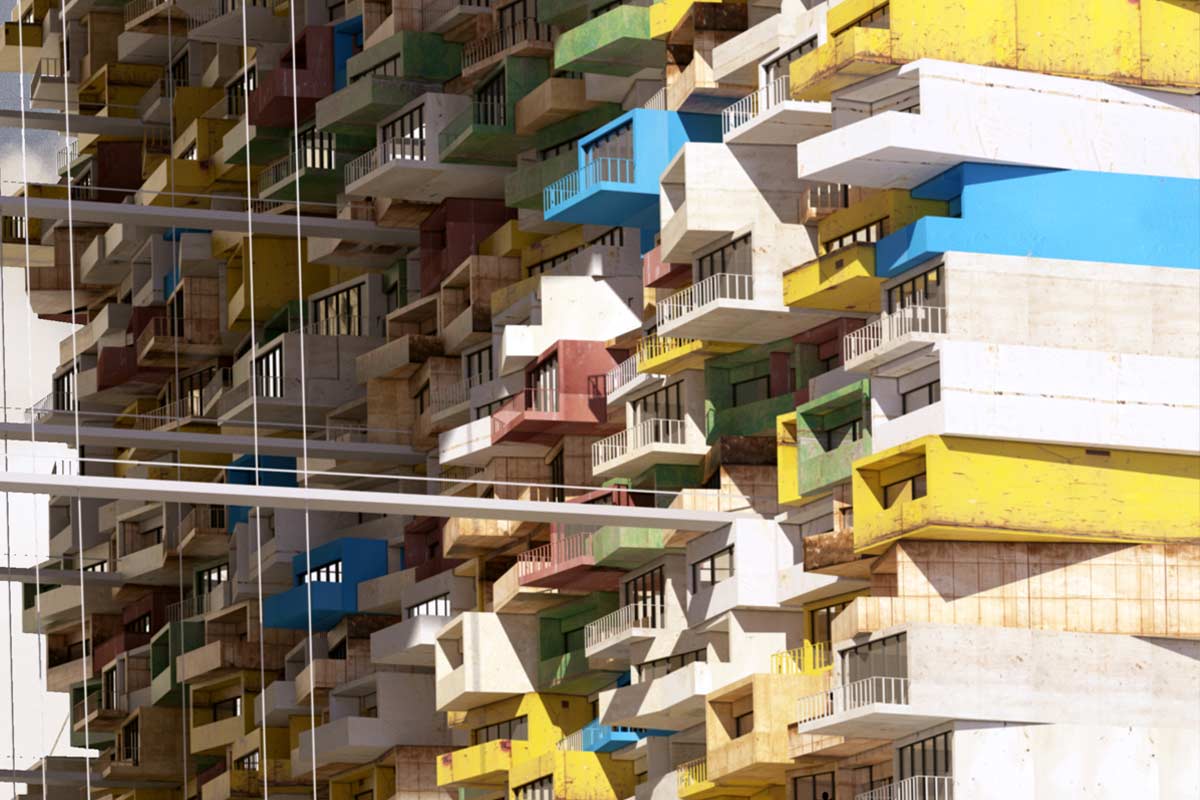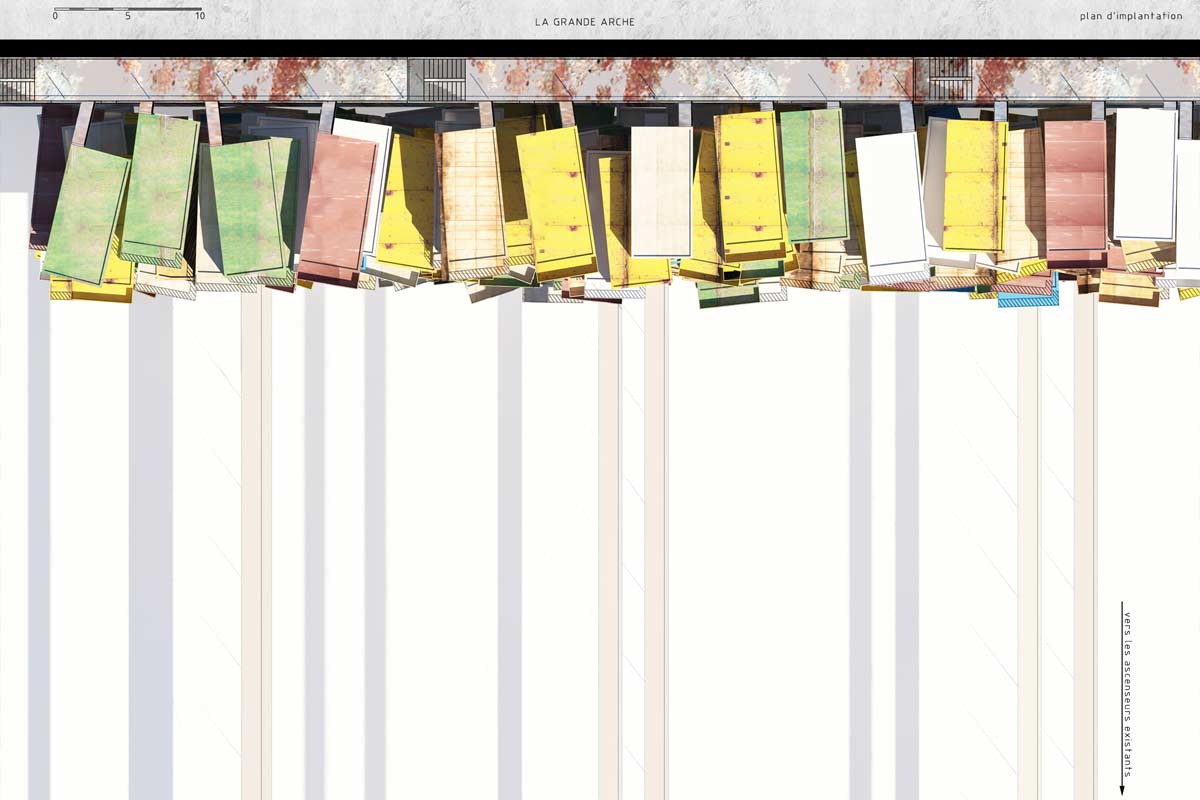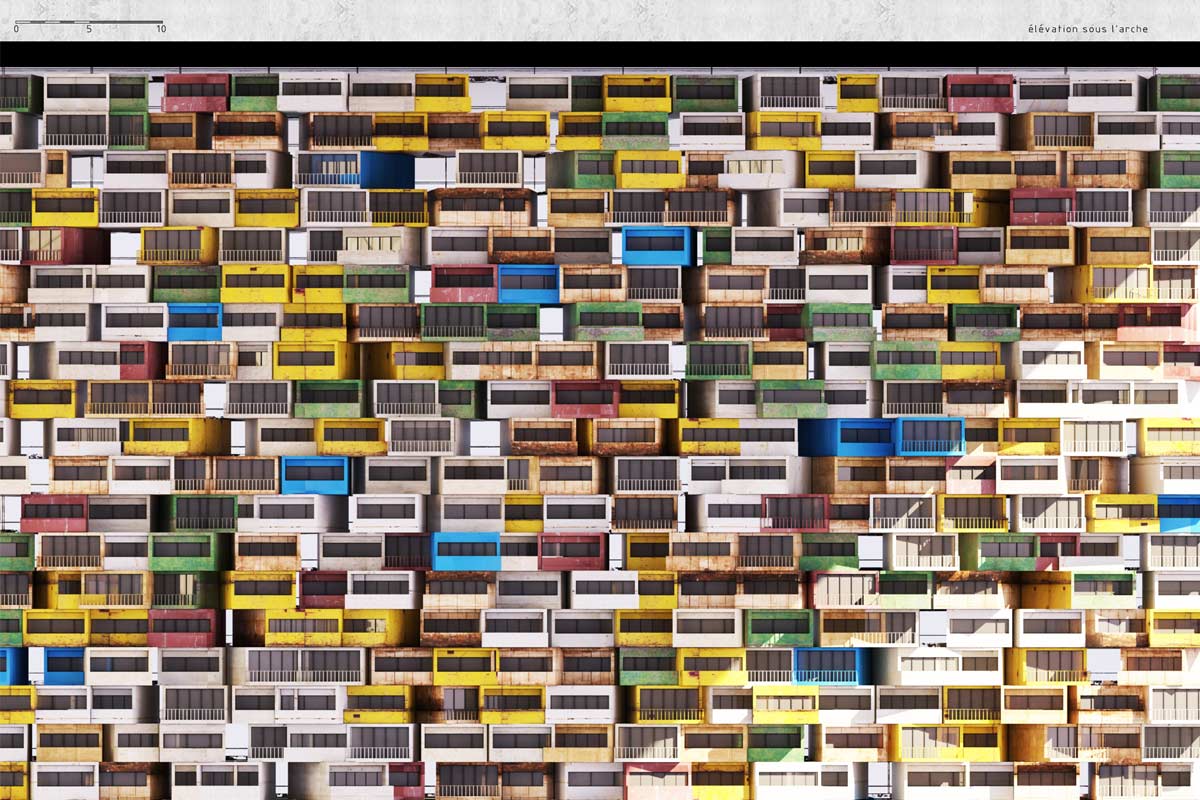 [Image: From Auto-Defense by Stéphane Malka].
[Image: From Auto-Defense by Stéphane Malka].In the second of two projects by architect Stéphane Malka that I want to look at here, the Arche de la Défense in Paris has been transformed into a honeycomb of subsidiary spaces: encrusted with modules that have been attached to the inside of the existing building's vast interior.
 [Image: From Auto-Defense by Stéphane Malka].
[Image: From Auto-Defense by Stéphane Malka].As writer and curator Maryse Quinton describes it, "this study imagines the hijacking of a building that is symbolic for its monumentality and its location: the Arche de la Défense."
- A pocket of active resistance installs itself within the building in the form of a modular complex offering an alternative and militant lifestyle. The project bears with it a permanent insurrection and unites all malcontents, whether refugees, stateless persons, dissidents, outcasts or utopians. Referring to the notion of concretion, its construction principle allows for expansion tailored to the effervescence of this spontaneous community. It bases itself on the existing fabric using walkways grafted on to the lifts and a system of scaffolding leaning against the rear facade. A guerrilla architecture project that aims to hijack the great arch of fraternity.

 [Images: From Auto-Defense by Stéphane Malka].
[Images: From Auto-Defense by Stéphane Malka].In any case, I really like this overhead view (below): the precarious spatial state of these revolutionary modules becomes readily apparent from above, as if this inspired reclaiming of urban space is really just one or two steps away from total collapse.
 [Image: From Auto-Defense by Stéphane Malka].
[Image: From Auto-Defense by Stéphane Malka].These units, of course, could also very easily be adapted to other buildings or sites, just as symbolic for their monumentality and location, as Quinton writes; in Malka's hands, the images would be equally breathtaking.
From U.S. Federal Buildings to overseas military bases; from the Kremlin to the Great Wall of China; from Parliament Square to historic battlefields; even as a structural cousin to Raimund Abraham's Church on the Berlin Wall—a project I hope to write about soon—where else could Malka's modular counter-utopias be anchored and what political scenarios might result?
Malka writes that architecture now "means reclaiming territory in the marginalized areas of our cities, with projects that bear insurrection and civic mobilization," thus "creating new potentials for collective use."
- This methodology seeks to promote public participation as an act of resistance against urban restrictions. It is a colonization of neglected public spaces by the participation of a non-specialized labor collective that elaborates on prefabricated and hijacked construction systems.
 [Image: From Auto-Defense by Stéphane Malka].
[Image: From Auto-Defense by Stéphane Malka].For more, see Malka's website.
(Earlier: Malka's "museum for neglected spaces." Related: projects by Santiago Cirugeda Parejo).
No comments:
Post a Comment